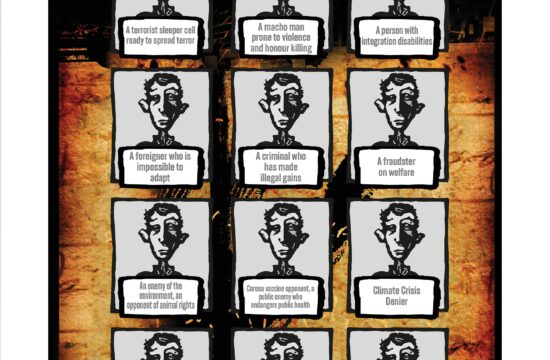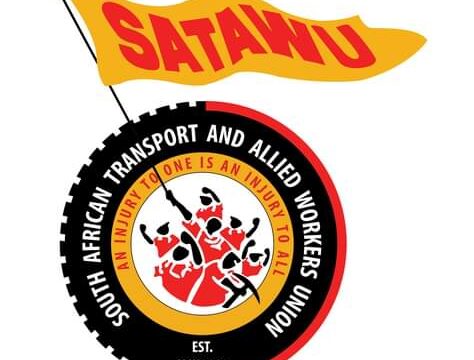Ashlyn Ajiambo
PoliTeknik International Editorial Board Member – KENIA
Politics and, to a large extent, politicians have been a powerful source of influence on the Kenyan youth. As we raced towards the 2022 choice, the onset of a heated election mood was enriched by massive student-politician engagements. Party manifestos, campaign agenda, rhetoric, narratives, tribal political inclinations, media and our natural affinity for hype had pitched expectations sensationally high, the egos were soaring. This period was marked by a convergence of political forces, and the youth found themselves at the epicenter of this electrifying political storm, particularly students. The prevalence of the student unrest in higher education institutions characterized by demonstrations, boycott of classes, closure of institutions, fierce clashes with police, stone throwing, commandeering vehicles, paralyzing ongoing businesses through looting, damaging buildings and equipment depicts the kind of attachments student activism has brought about. It is either directly or indirectly linked to the political climate bringing to light an intriguing relationship between student organizing and vicious campus politics. The political salience of student activities and rebellions have considerable impact on the larger society. Students play an important role in the political landscape by actively participating in election campaigns and mobilizing the electorate. Their intellectual gifts, labor, and activism within campus and college spaces contribute significantly to the vibrancy of this processes.
What really is student organizing in Kenya,
why is it important?
Student activism is an inherent part of campus and college spaces, and it plays a crucial role in fostering civic confidence. Political engagement on campuses is not limited to election cycles; it is a year-round endeavor. Students frequently organize protests, demonstrations, and discussions on socio-economic and political issues, creating a culture of active participation on national issues. Historically, Kenya has had a strong student activism platform, although sometimes erroneously seen as hooliganism or criminality, it goes deeper than that and in post-colonial Kenya students have shaped the democracy we have. However, since student activism does not exist in a vacuum its susceptible to its surroundings including socio-economic factors.
Thus, in recent times, the fiber of our livelihood has been distorted. We have become a legion of followers to politics and politicians. We have galvanized our individual persons into communal shields of defense for politicians, disconnecting us from contemplating our individual survival in the post -election period as well as, during a stiff economic crisis. While, constitutionally we are entitled and mandated to participate and if wishfully so, take sides in electoral processes. The fact is that when expectation meets reality, there is a natural shock of disillusionment. And most of us are exposed and overly gullible to negative responsive conditions. Instigation of violence is an issue that is absolutely alienated from the students‘ operations since the outburst unfolds as civil wars, ethnic clashes and high crime rates. However, it is undeniably entrenched in the core of their experiences. The allure of amassing substantial wealth in record time often outweighs the fear of engaging in criminal activities. Similarly, this compensates for the lack of job opportunities and the aspiration to align with the affluent class often dubbed as “nation makers.” Universities students then are reduced to instruments of violence and are often auctioned to drug cartels and tycoons to run their syndicates using their intellectual skills and labour services.
The dominance of retrogressive and populist politics is evident, ingrained into the structures, and gradually gaining influence within higher learning institutions while also shaping the perspectives of key players in Kenyan politics. For a long time now, these institutions have been acting as breeding grounds for vibrant and youthful leaders akin to preserving the existing ‘order’. Analyzing why the majority of the youth are joining politics and how numerical strength factors in is usually perceived as mere ongoing trends futile of the realization that a huge void has been left for the state machinery to screen and nurture it’s long term worthwhile political projects. This begins from the student politics.
Ethnic-based politics, inclusive of the contrived identity politics e.g., religion, gender and class in the Kenyan Universities are equally the state initiatives, which have severe implications in the long run. In earnest, all the promises and agendas politicians have presented to us, in exchange for the organizing and mobilization efforts we undertake on their behalf, cannot be actualized instantly, nor can they materialize without the support of well fabricated policy. The bureaucracies responsible for crafting and implementing policies, which in turn shape specific programs aimed at fulfilling these promises, pose a formidable challenge. This challenge is compounded by the need for the current government to establish a functional synergy among itself, the Senate, Parliament, County governments, and the prevailing political scenery. We may find ourselves enduring a protracted, exhausting, and unforgiving wait in the process.
Presence and influence of lobbying groups and organizations, i.e. INGOs, NGOs and civil societies such as Model of the United Nations-Kenya. These organizations work on many areas of the Constitution including issues of leadership and integrity, human rights, devolution, gender, electoral issues as well as environment, land misappropriation, evictions of indigenous people and other issues but lack an ideological bearing that manifests in the common struggles of the youth. They are inclined to think of community organizers who may work daily and directly with community members to make it their job to take care of and speak up for a community in some way. What’s the relation of student organizing with these organisations? How are they affected by them, since student organizing greatly depend with students as opposed to the communities? The unification of the progressive political forces to speak in one voice is constantly infiltrated by continuous threats from the state and student organizing is not an exception. During organized strikes and demonstrations, state sanctioned violence is usually imbued including police brutality, arrests and unlawful detention of students to suppress these actions.
Could there be a way -out tactics
for us youth to afford a safe landing strategy
Opportunity meets a prepared mind; we can only create an alternative of safe landing by: bringing back to life intellectual and progressive debates in university politics through fashioning ideological and political training as done by progressive political parties and organizations like that of the Communist party of Kenya. This will prepare a recipe of values of responsibility that can propel generation and disseminations of scientific ideas of social contract between the people and the government, erasing the cognitive impairment among students that they need to realize their aspirations in the limited and already strained assets of production.
“Let us be alive to the opportunities that the transition authority is already creating for those of us above the threshold of the formal sector. For those of us in the informal sector without enough individual asset capital, we have no other choice but to spice up our preparedness to beckon and attract devolved funds and technical support from the government. We must reconcile with everyone irrespective of our current political alters and mobilize ourselves into groups and generate ideas that create asset value of the little we have. Let us unlock our potential to meet the opportunities that the new government will create”
The kenyan youth should desire to have populism driven by the true knowledge among the people, not rhetoric that seems appealing, but, can never translate into real gains. The use of propaganda and agitation can enhance recruitment of students from working class and poor backgrounds or those ignited with revolutionary/ class consciousness which will help sharpen their vigilance, propel the revolutionary critical consciousness and concretize them with their immediate struggles. We can start by;
Enhancing and building avenues for dialogue exchanges and capacity training to propel an unison outward shift in attitude among the youth through addressing a myriad of impediments deeply rooted at the societal level that manifests in cluster of forms and have been imposed either through political, social or economic hardships to the youths i.e through informing a plethora of this threats that exists, it is in this lens that youths in prospects can serve as norm entrepreneurs and articulate panacea and prescribe that which can wield an inordinate prosperous participation in progressive politics.
Working towards expounding the field of political education of the youths through an intensive mobilization strategy that forges an increasing number of youth participants linked in identity to the Leftist political parties and movements who would stand to be the architectures in fragmenting the structural divide of classes to yield an equal classless society informed by Marxist -Leninist thinking. Instead of championing the spirit of patriotism as hummed by the national anthem, loyalty pledge, national flag, court of arms and the values of nationhood that encourages us to trust the elected leaders and maintenance of peaceful coexistence and reconciliation despite the calamities brought by the political orientations.
Expand relations with other clubs such as drama, music, art and theater clubs. Begin process of revolutionary art in environments where explicit political confrontations are being erased. It is time to construct restorative initiatives, build ideas, map out who to talk to, when to talk to them, how to talk to them and effect more operations from the dialogue which will ultimately forge alliances with student and workers union at the university in the numerous interactions with each other.
In conclusion, Student organizing in Kenya is a potent force that can shape the country’s political landscape and address societal challenges. However, it faces numerous challenges, including ethnic divisions, external influence, and state suppression. To navigate these obstacles, the youth must prioritize intellectual development, economic preparedness, knowledge- driven populism, unity, and political education. By doing so, they can create a brighter future for themselves and their country.











